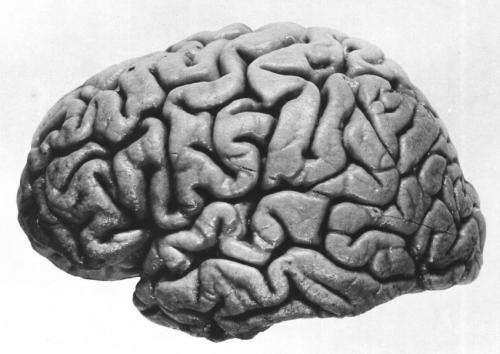A closer look at brain organoid development

How close to reality are brain organoids, and which molecular mechanisms underlie the remarkable self-organizing capacities of tissues? Researchers already have succeeded in growing so-called "cerebral organoids" in a dish - clusters of cells that self-organize into small brain-like structures. Juergen Knoblich and colleagues have now further characterized these organoids and publish their results today in The EMBO Journal. They demonstrate that, like in the human brain, so-called forebrain organizing centers orchestrate developmental processes in the organoid, and that organoids recapitulate the timing of neuronal differentiation events found in human brains.
The development of the human brain from just a few cells to a thinking organ is one of the great mysteries of biology. In the past decade, Knoblich and his team at the Institute of Molecular Biotechnology of the Austrian Academy of Sciences have pioneered brain organoid technology to investigate this intriguing process. Understanding normal organoid development is a prerequisite to using this powerful system to explore the possibility of modeling human developmental diseases.
The neocortex is the part of the mammalian brain involved in higher-order cognitive functions. It has expanded substantially in the course of the mammalian evolution and is highly complex in humans. Building such an intricate system relies on a precise orchestration of different developmental processes - the division of progenitor cells, and the generation of distinct cell types at the right time and the right place. So-called forebrain organizing centers play a key role in orchestrating the development of the neocortex. Organizing centers secrete factors that work long-distance to induce neighboring tissue to give rise to specific cell types. In normal brain development, an organizing center called the cortical hem lies just under the crown of the head, while the antihem marks the opposite side of the cortex and is located at the right and left side of the brain. The researchers found that both these organizing centers are present in organoids.
When the brain grows, new cells are added in a precise order. Cells formed earlier will differentiate into neurons of the inner layers of the cortex, while cells born later migrate further outwards, and glial cells - non-neural cells of the brain - are added towards the end. Finally, nerve cells grow long protrusions and connect with each other to form a complex network. These processes are also mimicked in brain organoids, stressing the value of organoids in investigating a broad array of brain developmental processes.
In the past years, Knoblich and his team have already expanded their research on organoids towards growing them from patient cells to investigate the cellular basis of developmental disorders. However, a thorough knowledge of normal organoid development is required to be able to interpret the aberrations in an organoid model of a developmental disease. The detailed description of organoid development in the current study of Knoblich's laboratory is an important step in this direction.
More information: "Self‐organized developmental patterning and differentiation in cerebral organoids," The EMBO Journal (2017) e201694700. DOI: 10.15252/embj.201694700


















